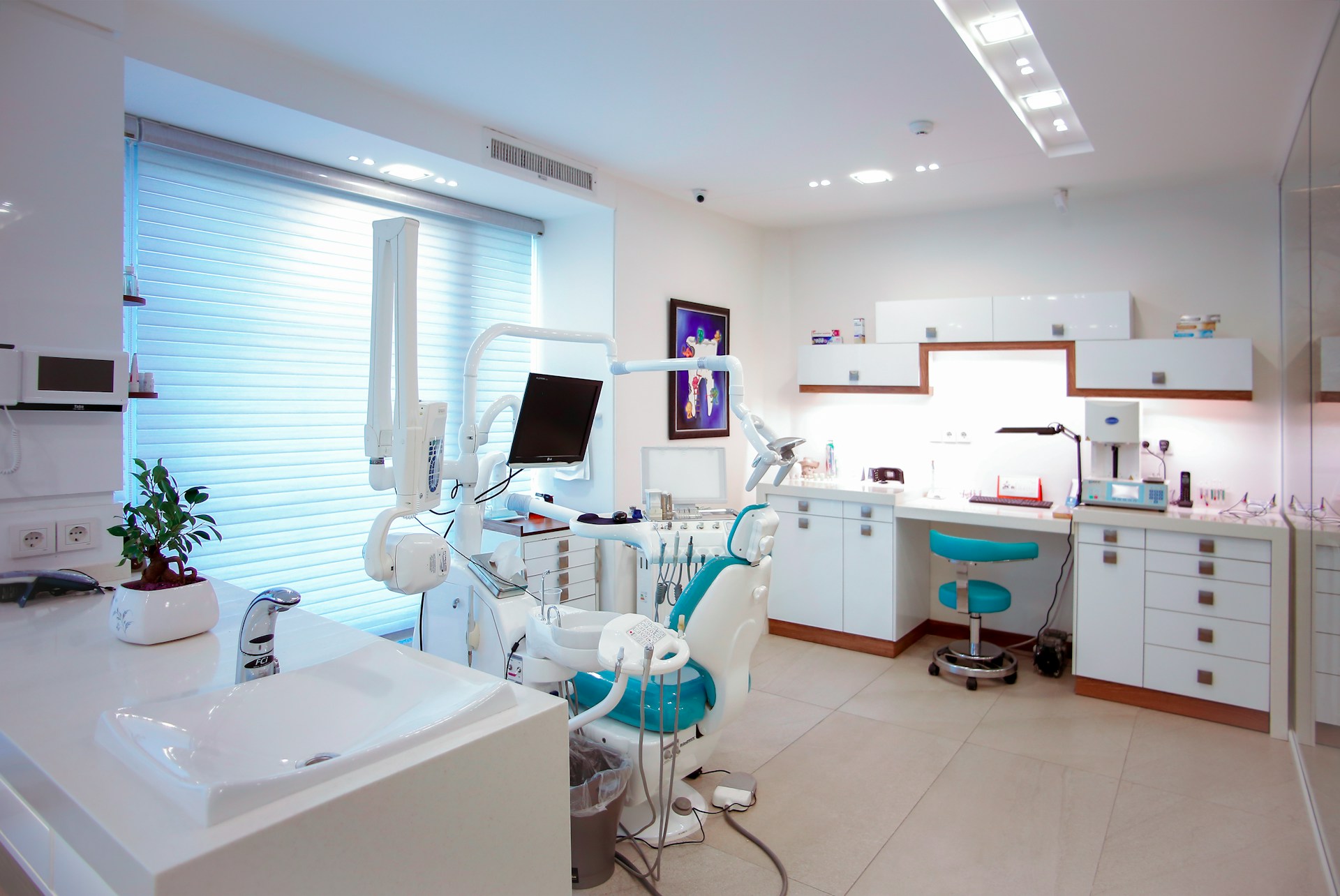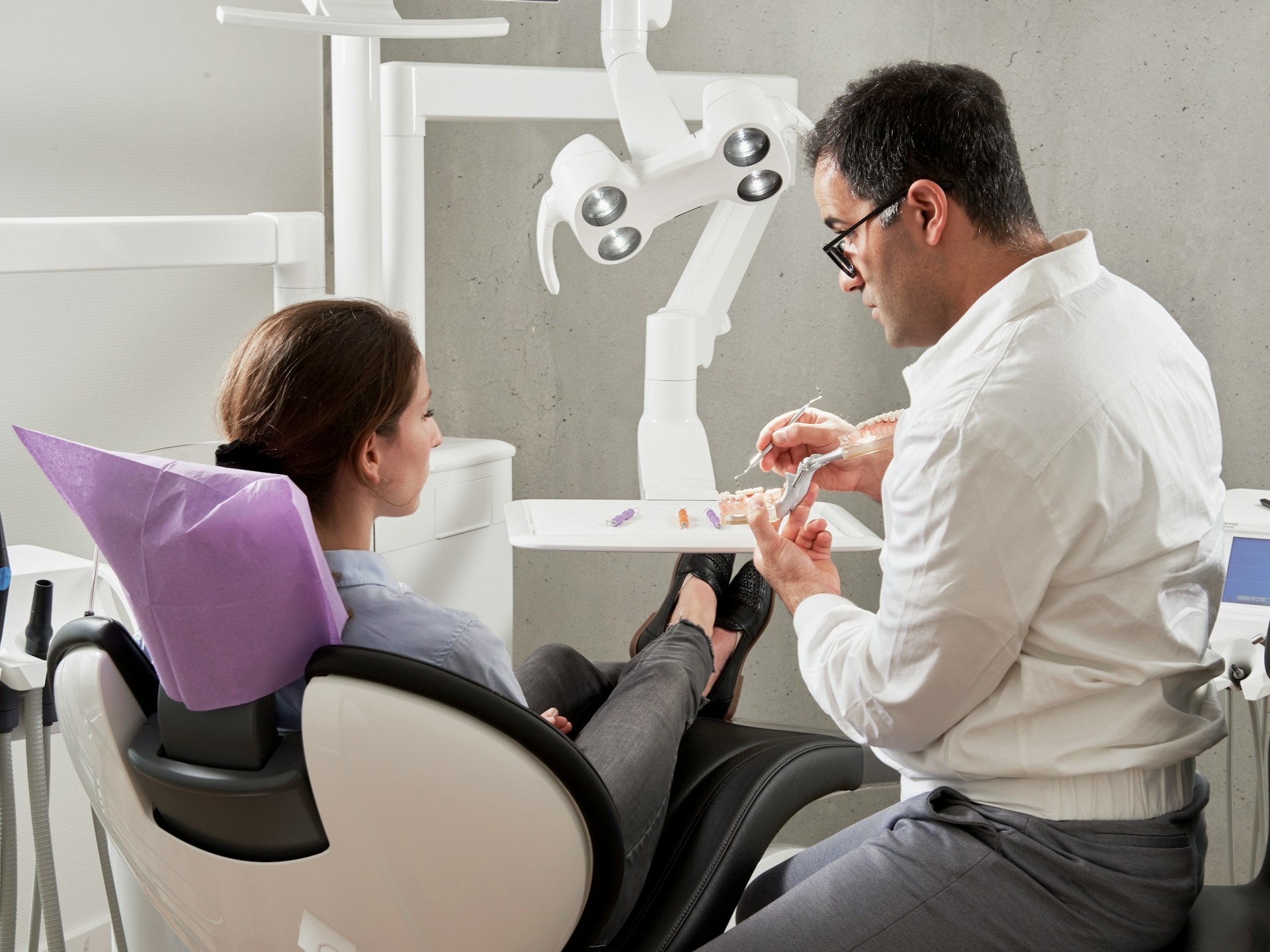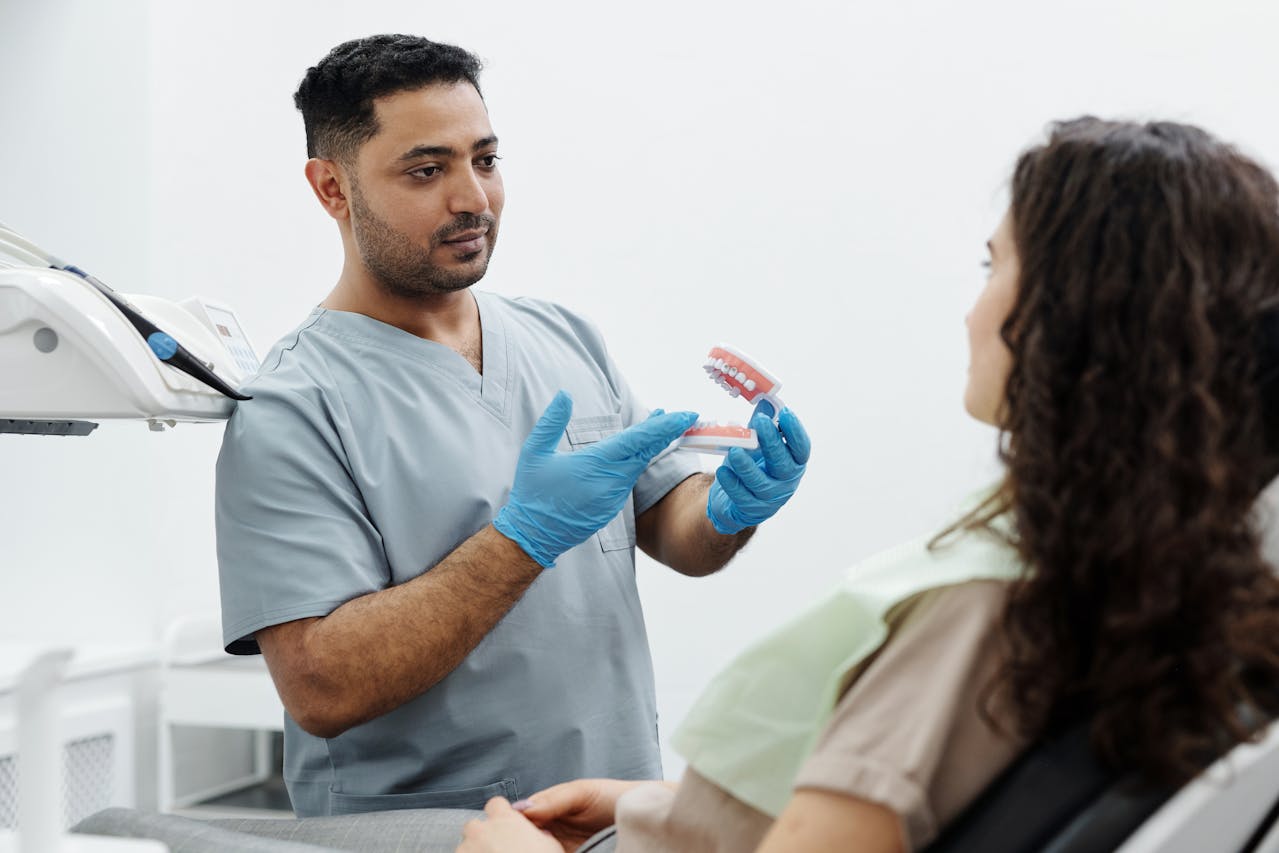Google Paid Ad Strategies For Dental Clinics In Alabama

Google Ads offers Alabama dental practices a powerful channel to capture high-intent patients actively searching for dental services. With 97% of consumers searching online for local businesses and 46% of all Google searches having local intent, paid advertising ensures your practice appears when potential patients need you most. However, the real challenge isn't just generating clicks—it's converting those expensive clicks into booked appointments.
Many practices waste significant ad spend when calls go unanswered, especially after hours or during peak times. This is where an AI receptionist for dental practices becomes essential, ensuring 100% of your Google Ads leads are captured and converted into scheduled appointments, maximizing your return on advertising investment.
Key Takeaways
- Alabama's dentist-to-population ratio of 49 per 100,000 (below the national average of 61) creates significant opportunities for practice growth through targeted advertising
- Dental practices can expect to pay $6.50-$9.75 per click in competitive markets, with average conversion rates of 4.2% and potential ROI of 300-500% on well-optimized campaigns
- Google Local Service Ads now available for dentists offer pay-per-lead pricing with Google verification badges, appearing above traditional search ads
- Proper call handling is critical—missed calls from Google Ads represent wasted ad spend, with Arini's AI receptionist reducing missed calls by up to 80%
- Alabama-specific compliance requirements under Code § 34-9-19.1 mandate documentation retention and truthful advertising claims
1. Leverage Alabama's Unique Market Opportunity
Alabama's dental market presents distinctive advantages for practices investing in Google Ads. With a dentist-to-population ratio of approximately 49 dentists per 100,000 people—below the national average of 61 per 100,000—many areas experience less competition than saturated markets in other states. This shortage creates significant opportunities for practice growth throughout Alabama, from urban centers like Birmingham and Huntsville to rural communities.
Market Characteristics by Region:
- Birmingham: Highest competition with CPCs at the upper end of the $6.50-$9.75 range, requiring strong differentiation and review generation
- Huntsville: Growing tech industry and higher household incomes support premium services and competitive advertising
- Mobile and Montgomery: Moderate competition levels with mid-range CPCs, good opportunities for established practices
- Rural areas: Lower CPCs and less competition, though lower search volumes require adjusted budget expectations
Why This Matters for Google Ads: The below-average provider density in Alabama means your Google Ads can achieve higher visibility with potentially lower costs than national averages. Practices in growing suburban areas see particularly strong results, with strong buyer interest where patient demand continues to outpace provider supply.
2. Implement Strategic Campaign Structure for Maximum Efficiency
Proper campaign organization is fundamental to Google Ads success. Dental practices should structure campaigns by service type rather than using a single catch-all approach.
Recommended Campaign Structure:
- General Dentistry Campaign: Targeting terms like "dentist in Birmingham," "family dentist near me," "dental cleaning Alabama"
- Cosmetic Dentistry Campaign: Focused on "teeth whitening Huntsville," "veneers Mobile," "smile makeover Montgomery"
- Emergency Dental Campaign: Targeting "emergency dentist tonight," "tooth pain relief," "broken tooth dentist"
- Specialty Services Campaign: For orthodontics, implants, or other specialized offerings
Ad Group Organization: Within each campaign, create tightly themed ad groups with 10-20 related keywords each. For example, under Cosmetic Dentistry:
- Teeth whitening ad group: "professional teeth whitening," "in-office whitening," "laser teeth whitening"
- Veneers ad group: "porcelain veneers," "cosmetic veneers," "smile design veneers"
This structure allows for highly relevant ad copy and landing pages, improving Quality Score and reducing costs per click.
3. Optimize for Google Local Service Ads (LSAs)
As of January 2023, Google expanded Local Service Ads to include dental practices, creating a premium advertising opportunity. LSAs appear at the very top of search results—even above traditional Google Ads—and operate on a pay-per-lead basis rather than pay-per-click.
LSA Requirements and Benefits:
- Google Screened Badge: Requires verification including proof of liability insurance, state business registration, and background checks (transitioning to Google Verified on Oct 20, 2025)
- Pay-Per-Lead Model: Only pay when potential patients contact you via phone or message, not for clicks
- Premium Placement: Appears above all other ad types in search results
- Enhanced Credibility: The verification badge builds trust with first-time patients
Implementation Strategy:
- Complete the verification process through Google's LSA platform
- Ensure your Alabama dental license is current and properly documented
- Set service areas to match your actual practice coverage
- Monitor the LSA dashboard regularly for lead management and dispute resolution
The Call Answering & Scheduling Module ensures every LSA lead call is answered immediately and appointments are booked directly into your practice management system, maximizing the ROI from this premium ad placement.
4. Master Alabama-Specific Keyword Strategy
Effective keyword selection is critical for dental Google Ads success in Alabama. Focus on high-intent keywords that indicate patients are ready to book appointments, not just researching.
High-Value Keyword Categories:
- Location-Specific Terms: "dentist in Birmingham," "Huntsville dental clinic," "Mobile dentist accepting new patients"
- Service + Location Combinations: "emergency dentist Montgomery," "cosmetic dentist Hoover," "dental implants Tuscaloosa"
- High-Intent Modifiers: "same-day appointment," "accepting new patients," "weekend hours," "accepts Medicaid"
Cost-Effective Approach:
- Emergency dental keywords: Average $11.22 CPC but high conversion potential
- Cosmetic dentistry keywords: Average $9.00 CPC with strong lifetime value
- General dentistry terms: Average $9.78 CPC as baseline acquisition
- Dental implants: Average $9.09 CPC but highest lifetime value per patient
Negative Keywords to Implement Immediately: Add these as negative keywords to prevent wasted spend on irrelevant clicks:
- Free, cheap, affordable
- Job, salary, career, employment
- School, training, education, course
- Review, rating, best, top
- DIY, home remedy, natural
5. Create High-Converting Ad Copy with Alabama Relevance
Ad copy should speak directly to Alabama patients' needs and pain points while highlighting your practice's unique differentiators.
Effective Headline Formulas:
- Emergency Focus: "Tooth Pain? Same-Day Relief in [City]"
- New Patient Emphasis: "Accepting New Patients in [Neighborhood]"
- Insurance Clarity: "Accepts Medicaid & Most Insurance Plans"
- Convenience Messaging: "Weekend & Evening Appointments Available"
Essential Ad Extensions:
- Call Extensions: Phone number for one-tap calling
- Location Extensions: Practice address with Google Maps link
- Sitelink Extensions: "New Patient Special," "Emergency Care," "Services"
- Callout Extensions: "Bilingual Staff," "Free Parking," "Gentle Care"
Alabama-Specific Messaging Opportunities:
- Reference local landmarks or neighborhoods
- Mention community involvement or local events
- Address seasonal needs (college students during football season, spring break emergencies)
- Highlight accessibility from major highways or areas
The Arini AI Receptionist Platform enables you to confidently advertise 24/7 availability and same-day scheduling, knowing every call will be answered and appointments booked even after hours.
6. Ensure Mobile-Optimized Landing Pages
With some mobile searches for "dentist near me" growing by 30% in Alabama cities since 2023, mobile optimization is non-negotiable. Google uses mobile-first indexing, meaning your mobile experience directly impacts Quality Score and ad costs.
Essential Mobile Landing Page Elements:
- Click-to-Call Button: Prominently displayed at the top of the page
- Mobile-Friendly Forms: Minimal fields, large touch targets, auto-complete enabled
- Fast Load Speed: Under 3 seconds on mobile connections
- Local Content: Alabama-specific imagery, local testimonials, neighborhood references
- Clear Call-to-Action: "Call Now" or "Book Appointment" buttons above the fold
Conversion Optimization Strategy: Rather than relying solely on forms, prioritize phone calls as your primary conversion goal. Dental services convert better through direct conversation, and mobile users are more likely to call than fill out forms. The Patient FAQ & Communication Module reduces landing page friction by handling common patient questions about insurance, billing, and office hours through AI.
7. Implement Comprehensive Call Tracking and Analytics
Measuring ROI requires proper tracking setup from day one. Without conversion tracking, you're essentially flying blind and cannot optimize for performance.
Essential Tracking Setup:
- Call Tracking Numbers: Unique numbers for Google Ads campaigns
- Form Submission Tracking: Track appointment requests and contact forms
- Google Analytics Integration: Connect ad performance to website behavior
- Practice Management System Integration: Link booked appointments to ad sources
The Analytics & Notifications Module provides dashboard tracking of call volume, answered calls, and booked appointments with revenue impact metrics, giving you complete visibility into Google Ads performance and proving your ad spend ROI.
Key Metrics to Monitor:
- Cost per lead ($50-$80 average for dentists)
- New patient acquisition cost ($175-$325 depending on specialty)
- Call-to-appointment conversion rate
- Revenue generated per ad campaign
- Missed call percentage (should be near 0% with proper systems)
8. Navigate Alabama Advertising Compliance Requirements
Alabama Code § 34-9-19.1 specifically regulates dental advertising, requiring careful compliance to avoid disciplinary action from the Board of Dental Examiners.
Essential Compliance Requirements:
- Documentation Retention: Keep recordings of broadcast ads and copies of all printed advertisements for one year
- Truthful Claims: Avoid false, fraudulent, misleading, or deceptive statements
- Specialty Advertising: Only advertise as specialists if approved by the American Dental Association
- Referral Service Disclaimers: Required if using dental referral services in advertising
Practical Implementation:
- Review all ad copy for compliance before launch
- Maintain a compliance folder with all advertising materials
- Avoid absolute claims like "best," "guaranteed," or "cure"
- Use qualified language like "experienced," "professional," or "comprehensive"
Understanding these requirements ensures your Google Ads campaigns remain effective while avoiding legal complications.
9. Optimize Budget Allocation for Alabama Markets
Proper budgeting is essential for sustainable Google Ads success. Industry experts recommend allocating 5-6% of gross revenue to overall marketing, with a significant portion directed to paid advertising.
Budget Guidelines by Practice Type:
- Established Urban Practices: $100-200 daily ($3,000-6,000 monthly) for competitive markets like Birmingham
- Suburban Practices: $50-100 daily ($1,500-3,000 monthly) for growing areas
- Rural Practices: $25-50 daily ($750-1,500 monthly) for lower-competition markets
- New Practices: Higher initial allocation (8-10% of projected revenue) until patient flow stabilizes
ROI Expectations: Well-optimized dental campaigns achieve 300-500% ROI, meaning every dollar spent returns $3-5 in revenue. With the average new patient worth $1,500 to $3,000 in lifetime value, even higher acquisition costs can be justified for high-value services.
10. Address the Critical Call Handling Gap
The most expensive Google Ads mistake is missed calls. When your front desk is busy, after hours, or overwhelmed, expensive PPC-generated calls go unanswered, wasting your advertising investment entirely.
The Impact of Missed Calls:
- Each missed call represents $6.50-$9.75 in wasted ad spend
- Missed opportunities compound when patients call competitors instead
- After-hours emergency searches are particularly valuable but often missed
Solution with Arini: The Arini AI Receptionist Platform answers 100% of inbound calls 24/7 and converts them into booked appointments, as demonstrated in case studies showing up to 80% reduction in missed calls. Built for dental groups and DSOs with multi-location support and custom routing rules, Arini ensures each location's Google Ads calls are answered and scheduled correctly, maximizing your advertising ROI.
The Integration & Workflow Customization Module supports multi-location DSOs with routing rules and customizable call flows per practice, seamlessly integrating with your Google Ads call tracking across all Alabama offices.
Frequently Asked Questions
Q: How much should a dental practice in Alabama spend on Google Ads per month?
A: Alabama dental practices typically spend anywhere from $500 to $5,000 per month on PPC campaigns, depending on location, competition, and growth goals. Industry experts recommend allocating 5-6% of gross revenue to overall marketing, with a significant portion directed to Google Ads. Urban practices in Birmingham or Huntsville typically require higher budgets ($3,000-6,000 monthly) due to competitive CPCs, while rural practices may see results with $750-1,500 monthly budgets.
Q: What's the difference between Google Ads and Google Local Service Ads for dentists?
A: Traditional Google Ads operate on a pay-per-click model where you pay each time someone clicks your ad, regardless of whether they convert. Google Local Service Ads (LSAs), available for dentists since January 2023, operate on a pay-per-lead basis—you only pay when potential patients actually contact you via phone or message. LSAs also display a "Google Screened" badge after verification and appear at the very top of search results, even above traditional Google Ads, providing enhanced credibility and premium placement.
Q: How do I stop wasting money on Google Ads clicks that don't convert?
A: The most effective strategies to reduce wasted ad spend include: (1) Implementing comprehensive negative keywords to filter irrelevant searches, (2) Using precise geographic targeting to focus on your actual service area, (3) Creating tightly themed ad groups with highly relevant keywords, (4) Ensuring 100% call answering with an AI receptionist to capture every lead, and (5) Regularly reviewing search term reports to identify and block non-converting traffic. The biggest waste occurs when expensive clicks result in missed calls, which can be eliminated with proper call handling systems.
Q: Can Google Ads work for a small dental practice with limited budget?
A: Yes, Google Ads can be highly effective for small practices with limited budgets when implemented strategically. Focus on specific high-intent keywords in your immediate service area, use precise geographic targeting (5-10 mile radius), emphasize your unique differentiators, and ensure every call is answered. Small practices often benefit from less competition in suburban or rural Alabama markets where the dentist-to-population ratio is below national averages. Starting with $25-50 daily budgets and focusing on high-converting services can generate positive ROI even with limited spending.
Q: How long does it take to see results from dental Google Ads campaigns?
A: Initial results can appear immediately once campaigns launch, with some practices seeing inquiries on the same day. However, meaningful performance data typically requires 2-4 weeks to accumulate, and optimal campaign performance usually takes 4-8 weeks of continuous optimization. Alabama practices in less competitive rural markets often see faster results than those in Birmingham or Huntsville where competition is fiercer. Plan for a minimum 90-day commitment to properly evaluate Google Ads effectiveness for your specific practice.









